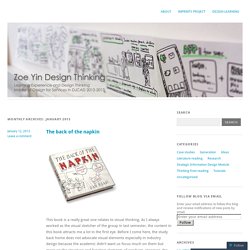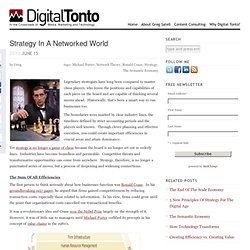

Creativity Tools for Developing Creative Solutions from MindTools.com. Got it!

We use cookies to give you the best experience of our website. More on this. Cookie Consent plugin for the EU cookie law Subscribe to Our Newsletter Subscribe to Our Newsletter Receive new career skills every week, plus get our latest offers and a free downloadable Personal Development Plan workbook. Read our Privacy Policy Browse Tools by Category Start Here (3) Understanding Creativity 14 5 MIN READ How Creative Are You?
Brainstorming (9) Other Idea-Generation Tools (7) Creativity Processes (11) Further Resources Bite–Sized Training (1) Book Insights (20) Expert Interviews (5) Processing Please wait... AddThis Sharing Sidebar Share to Facebook , Number of shares Share to TwitterShare to LinkedInShare to EmailShare to EvernoteShare to MIXMore AddThis Share options , Number of shares638 Hide Show. Zoe Yin Design Thinking. This book is a really great one relates to visual thinking.

As I always worked as the visual sketcher of the group in last semester, the content in this book attracts me a lot in the first eye. Before I come here, the study back home does not advocate visual elements especially in industry design because the academic didn’t want us focus much on them but more on the structure and function elements of products. However, the study in UK provides me lots insights of how visual thinking could help express and generate meaningful ideas. Before I forget anything, this blog is a good space to place some notes of this book. Firstly, the author (Dan Roam) introduces The six problem “clumps”.
They are quite familiar to us design students because they are just the famous Ws. Then here is the introduction of The process of visual thinking. Next The four cardinal rules for better looking is also familiar to me especially after experiencing the study in the last semester. Visual Thinking #1: 5 stages of idea generation - Planning Notes. Inteligencia Creativa, 7 estrategias para descubrir y potenciar tu creatividad. iCreate Project. Test Your Creativity: 5 Classic Creative Challenges. Fascinated by how brains and creativity work, we frequently share new research on the 99U twitter feed, showing how everything from drinking alcohol, to taking vacations, to moving your eyes from side to side can make you more creative.

What’s particularly interesting, however, is that most of these studies rely on just a small group of core creativity tests – and you don’t need any special lab equipment to take them. Below, we’ve collected five of the most commonly used creativity challenges for your self-testing pleasure. While creativity “testing” is far from an exact science, trying your mettle at these challenges could yield insight into when, where, and how you’re most creative. Or maybe it’ll just be fun. 1. Developed by J.P. Hold papers togetherCufflinksEarringsImitation mini-tromboneThing you use to push that emergency restart button on your routerKeeping headphones from getting tangled upBookmark The test measures divergent thinking across four sub-categories: 2. 3. 4. 5. Strategy In A Networked World. Legendary strategists have long been compared to master chess players, who know the positions and capabilities of each piece on the board and are capable of thinking several moves ahead.

Historically, that’s been a smart way to run businesses too. The boundaries were marked by clear industry lines, the timelines defined by strict accounting periods and the players well known. Through clever planning and effective execution, you could create important efficiencies in crucial areas and attain dominance. Yet strategy is no longer a game of chess because the board is no longer set out in orderly lines. Industries have become boundless and permeable. The Sum Of All Efficiencies The first person to think seriously about how businesses function was Ronald Coase. It was a revolutionary idea and Coase won the Nobel Prize largely on the strength of it. Porter’s ideas essentially provided managers with a blueprint for building competitive advantage. The End Of Scale And The New Age Of Disruption. 3 Myths That Kill Strategic Planning - Nick Tasler. By Nick Tasler | 11:00 AM May 7, 2014 In its simplest form, strategic thinking is about deciding on which opportunities to focus your time, people, and money, and which opportunities to starve.

One of history’s greatest strategic thinkers, Napoleon Bonaparte summed it up this way: “In order to concentrate superior strength in one place, economy of force must be exercised in other places.” If dead, despotic French emperors are not really your style, Michael Porter said it like this: “The essence of strategy is choosing what not to do.” At the highest level, this usually means deciding to sell off one company in order to buy another one. More often it simply means deciding to move some initiatives to the back burner in order to concentrate the bulk of your resources in a single key area. Sounds simple enough. Myth 1: Productivity is the goal. Productivity is about getting things done. In the face of all that unpleasantness, it is tempting to continue striving for productivity.